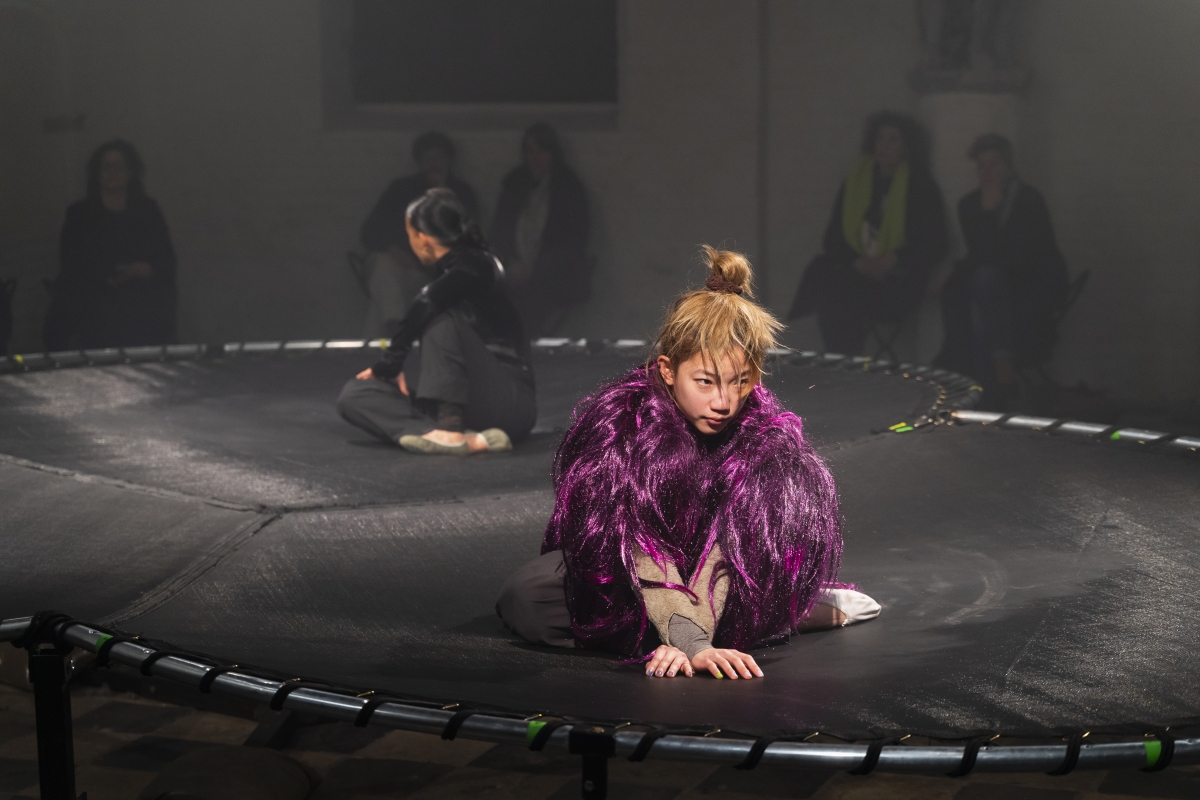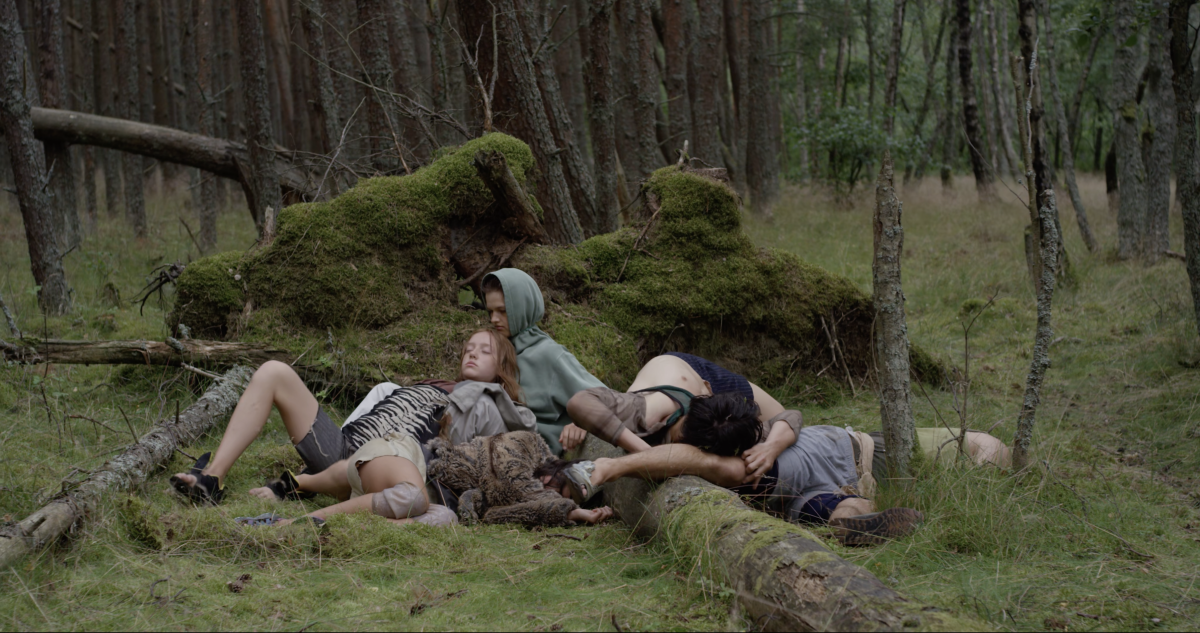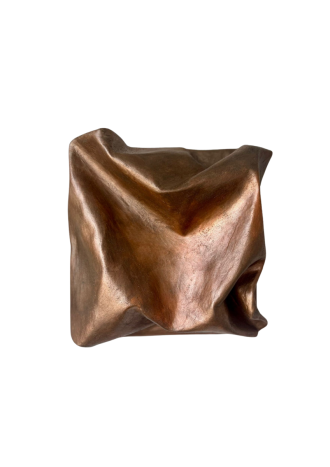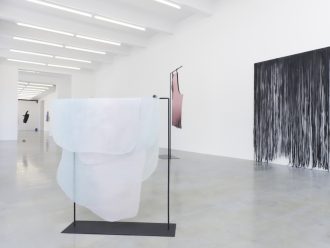This Sunday, 23 July, the program of the Vilnius Biennial of Performance Art dedicated to the 700th anniversary of Vilnius began in Vilnius. The Biennial will open with the performance Song Sing Soil by Eglė Budvytytė and Marija Olšauskaitė, who took part in last year’s main exhibition of the Venice Art Biennial.
The Vilnius Biennial of Performance Art (VB23) is a new ongoing international event dedicated to contemporary performance art. The two-week VB23 program will present 38 artists with a total of 31 performances in 17 different locations in Vilnius. Almost all of the Biennial’s events are free of charge, with a few exceptions, including the performance Song Sing Soil by Eglė Budvytytė and Marija Olšauskaitė, which will open the festival and invite everyone to the Art Printing House on Sunday (2 pm) and Monday (4 pm, 5:30 pm, and 7.30 pm).
Eglė Budvytytė is an artist based in Amsterdam and Vilnius, whose work has been presented at the 59th Venice Biennial Main Exhibition, Italy, The Renaissance Society Museum of Contemporary Art, Chicago, USA, the Lofoten International Art Festival, Norway, Block Universe performance art festival in London, Art Dubai Commissions in the United Arab Emirates, Liste and Art Basel art fairs in Switzerland, 19th Sydney Biennial in Australia, De Appel Art Center in Amsterdam, etc. In her creative practice, which encompasses song, poetry, video, and performance, the artist explores the suggestive power of collectivity, vulnerability, and the permeable relationships between bodies, audiences, and environments.
Marija Olšauskaitė is an artist living and working in Vilnius, who has had solo exhibitions at the Vleeshal Center for Contemporary Art in the Netherlands (with Eglė Budvytytė, 2023), at the Art in General contemporary art exhibition space in New York, etc. Olšauskaitė has also participated in group exhibitions, including the 59th Venice Biennial Main Exhibition, the Riga International Biennial of Contemporary Art (RIBOCA), exhibitions at the Kunstverein in Amsterdam and the Nomas Art Foundation in Rome, etc. In her work, the artist uses a variety of collaborative techniques and explores themes of relationships, openness, intimacy, and belonging.
“The subtlety and impact of the artists’ work through sound, movement, and bodily relationships, as well as their attention to the more difficult to define and changeable, but important aspects of our lived reality, are among the key reasons why Song Sing Soil was chosen to open the Biennial’s main program. In order to maintain an active relationship between performer and spectator that questions the traditional hierarchies of the performing arts, the number of visitors is limited in this performance,” says Neringa Bumblienė, artistic director of the Biennial, about the opening performance of VB23.

Eglė Budvytytė and Marija Olšauskaitė. Performance Song Sing Soil. Photo by Gunnar Meier Photography
Ahead of the Biennial’s opening, we talked to Eglė and Marija about their creative partnership, their unique long-distance collaboration, the genesis of their latest performance Song Sing Soil, and the themes explored in the work.
Rosana Lukauskaitė: How did your creative partnership come about?
Eglė Budvytytė: Our collaboration grew out of friendship and spending time together in Vilnius, Nida, and earlier in Amsterdam. Since we live in different countries, working together allows us to spend more time together.
Marija Olšauskaitė: I think the line between communication and creativity is very thin. It’s like a flowing process.
RL: Do you, Eglė, living in Amsterdam, and you, Marija, living in Vilnius, face any challenges because of the distance? Has globalization nowadays removed all barriers and is it easy to communicate and create together no matter where you live?
EB: Distance can sometimes be a challenge or a gap, a pause. But by meeting again in the same space and time, the conversation organically extends or starts again in another context.
MO: The effect of distance is ambiguous – although it is a challenge, it also enriches us both with different experiences.
RL: How was the idea of the performance Song Sing Soil born?
MO: This performance through the prism of the text and Eglė’s songs is a continuation of an ongoing creative conversation.
EB: Yes, this performance is an offshoot of certain ideas (dying, decay, metabolism between different worlds) explored in the film Songs from the compost. Mutating bodies, imploding stars made in Nida together with Marija and the artist Julija Steponaitytė. Song Sing Soil also continues our work with language and sound as malleable, viscous, and magical matter. The fact that I don’t come from the world of music and have no particular skills or habits enables a very open approach to working with sound and music, which becomes both unpredictable and interesting. Marija develops the creative process through different materials and substances – in this case, she delves into the conceptualization of spaces, costumes, and lights.
While working on this performance, we were still thinking about the rich territory between form and formlessness, between the generation of meaning/significance and its “slipping away”. That place between form and formlessness offers a counterweight to logic, rationality, and linearity as the only reliable ways of knowing. All of this unfolds in this work through sound, murmurs, melodies, rhythm, and soundscapes. I am also very attracted to the figure of the “broken”, slightly disturbed spiritual authority, which I develop in every way and allow to be embodied through language.
RL: And what will be the interaction of this performance with the audience? What kind of reaction do you expect? Will the audience be able to participate interactively, or will they just be observers?
EB: I think the dividing line between active participation and simple observation is not strictly binary. Our mirror neurons are constantly activated when we observe images or movements, even if we are not doing them ourselves.

Eglė Budvytytė and Marija Olšauskaitė. Performance Song Sing Soil. Photo by Gunnar Meier Photography
RL: Marija, your work often deals with themes of relationships, openness, and intimacy. How are these aspects reflected in Song Sing Soil?
MO: These are quite universal themes that are inherent in any collaboration, but we don’t deal with them directly in this particular work, they just exist as part of the context. They are a natural part of life and don’t always need to be emphasized. I like to collaborate with other artists because it allows me to draw attention to other aspects, such as formlessness, and take them in more deeply. The themes of relationships and community are consistently discussed, both individually and together, as an integral part of our practice.
EG: It’s true that intimacy is not so much a theme in this work as it is a situation that manifests itself through the fragile voice, the physical proximity, and the exchange of glances between performers and the audience.
MO: We want to avoid declarations. It is important for us to maintain self-reflection and a sense of humor so that our work does not become too controlled or closed.

Still from film “Songs from the compost: mutating bodies, imploding stars” by Eglė Budvytytė, Marija Olšauskaitė and Julija Lukas Steponaitytė filmo (2020, 4K video, 28 min)

Still from film “Songs from the compost: mutating bodies, imploding stars” by Eglė Budvytytė, Marija Olšauskaitė and Julija Lukas Steponaitytė filmo (2020, 4K video, 28 min)
RL: Could you tell us more about your performance artists? How do you work with them?
EB: Tomislav Feller, Ming-Jou Chen, and Tosca Knauf are amazing movers, dancers, and choreographers with experience in different dance and movement practices such as ballet, scuba diving, gyrotonics, and improvisation. We worked with them based on a very open structure – I proposed to use the abstract and poetic text of the soundtrack as a backbone for the performance. It was an invitation to help the words to unfold more meaningfully in the space, supporting them but not trying to illustrate their meaning with movement, body, gaze, or presence. This structure allows the performers to use their own skills and idiosyncratic archives of movement, and to improvise a little each time they perform the work. The structure of the specially designed springboard proposed by Maria also dictated a certain softness and communality of the choreography as movement happens on an unstable surface.
The Vilnius Biennial of Performance Art is one of the most important events in 2023 to celebrate the 700th anniversary of Vilnius. The anniversary program was initiated by Vilnius City Municipality and is curated by Go Vilnius, the official business and tourism development agency of Vilnius City. The organizer is the Vilnius gallery Meno Niša. VB23 is funded by Vilnius City Municipality, the Chancellery of the Government of the Republic of Lithuania, and the Lithuanian Council for Culture. The main partner is JCDecaux Lietuva.

Eglė Budvytytė and Marija Olšauskaitė
























